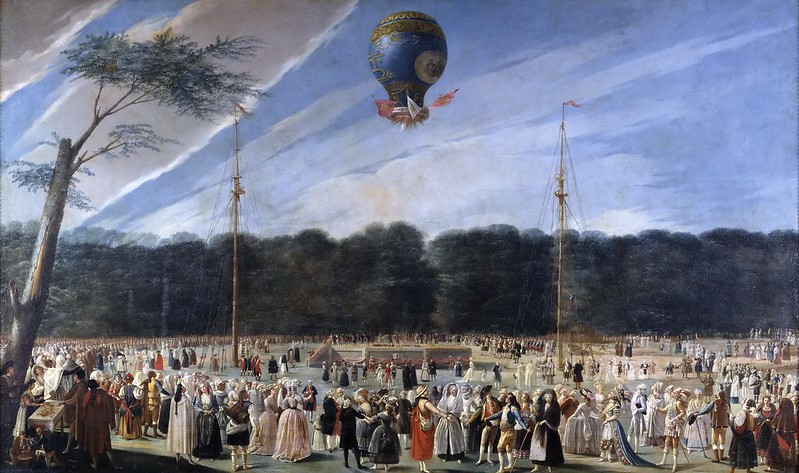Welcome to the gravity-defying world of
Two Feet Off The Ground
 THE PHYSICS OF HOT AIR BALLOONS
THE PHYSICS OF HOT AIR BALLOONS
Ever wonder how hot air balloons fly? It's all thanks to some simple physics!
A hot air balloon is a type of aircraft that uses warm air inside a balloon-like envelope to lift it into the air. The envelope is usually made of fabric and is filled with either hot air generated by a burner, or the heat of the sun. The first hot air balloon was invented by the brothers Joseph-Michel and Jacques-Etienne Montgolfier in 1783.
The Montgolfier brothers originally started experimenting with balloons made of paper and linen that were filled with either smoke or hot air from a fire. They noticed that the balloons would rise into the air if they were heated, but they would not descend back down when the fire was extinguished. They also found that the larger the balloon, the longer it would stay in the air. Based on these observations, they designed and built the first hot air balloon.
The Montgolfier brothers' balloon was made of linen and paper, and was about 60 feet (18 m) in diameter. It was filled with hot air from a wood fire, and had a wicker basket attached to the bottom. On November 21, 1783, their balloon successfully carried two men aloft for about 10 minutes before landing safely back on the ground.

The physics behind how hot air balloons work is actually quite simple. Hot air rises in the atmosphere because it is less dense than the colder air around it. The envelope of the balloon traps the hot air inside, and as more hot air is added, the balloon expands and becomes less dense than the air outside. This causes it to rise into the atmosphere until it reaches a level where the surrounding air is the same temperature as the air inside the balloon.
At this point, the balloon will stop rising and will start to float. The pilot can control the altitude of the balloon by adding or releasing hot air from the burner. To descend, the pilot simply opens a valve to release some of the hot air from inside the envelope.
On average, hot air balloons can stay aloft for around four to five hours before needing to land for refueling. The record for longest flight time is held by Kevin Uliassi who stayed aloft for 46 hours and 23 minutes in 2002!
Hot air balloons are a fascinating example of how physics can be used to fly. By understanding the principles of hot air rising and how to trap it inside an envelope, people have been able to take to the skies in a relatively simple and safe way.
Hot air ballooning is a relatively safe form of aviation. In the US, there were only 7 hot air balloon fatalities out of 4,476 accidents between 1964 and 2013. However, hot air ballooning does have some inherent risks that are important to be aware of.
The most common type of accident is called a 'hard landing.' This occurs when the hot air balloon hits the ground with too much force and can cause serious injury or even death to the occupants of the basket. Hard landings are often caused by sudden changes in wind speed or direction which can catch the balloonist off-guard.
Another risk associated with hot air ballooning is fire. Since the envelope is filled with heated air, it is possible for it to catch fire if the burner is not used correctly. In addition, if the envelope material itself is not fire-resistant, a fire inside the envelope can quickly spread, leading to disaster.
Despite the risks, hot air ballooning is an exciting and unique way to experience the world from a bird's eye view!
Now that you understand the basics of how hot air balloons work, you can see why they are such a popular way to experience the world from a bird's eye view!










